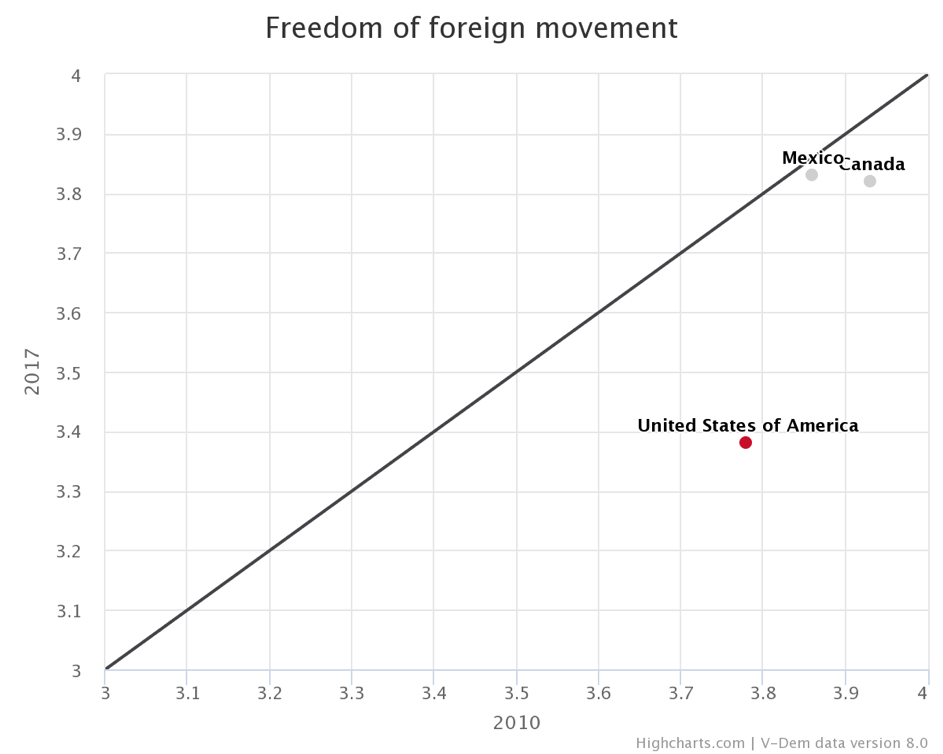Freedom of Foreign Movement in North America
By: V-Dem Staff
Apr 08, 2019
According to the United Nations (UN), the flow of migrants and refugees across international borders is at an all-time high with over 250 million migrants worldwide. Reasons for migration are varied, from fleeing conflict and poverty, to seeking better opportunities.
International organizations have been working on developing better responses to the social, economic, and political impacts of migration. The UN Global Compact for Migration 2018, an inter-governmental global agreement for international migration is one example. However, initiatives advocating for stricter migration laws and restrictions on migration flows are also on the rise.
V-Dem’s new tool, the Regional Comparison graph illustrates the changes in freedom of movement in North America by comparing the situation in 2010 and 2017. The indicator for freedom of foreign movement investigates the extent to which citizens are able to travel freely to and from countries. It also looks at the ease of emigration without being subjected to restrictions. Countries on or very close to the line remain at the same levels between the two selected years. The colored dots indicate changes that are significantly different from zero with green signifying an improvement and red, a decline. Mexico and Canada do not present significant changes and exhibit close to full respect of movement by authorities. The United States however, shows a drop as it has been enforcing stricter migration laws since January 2017. At the same time, people have been attempting to enter the US while fleeing conflict in their home countries. According to the Migration Policy Institute, the Trump administration has put forth a range of changes on the US immigration policy. This includes new requirements for visa applications, cuts in the admissions of refugees, and a reduction in the protection of non-citizens.
To learn more about V-Dem’s graphing tools, please visit v-dem.net.


